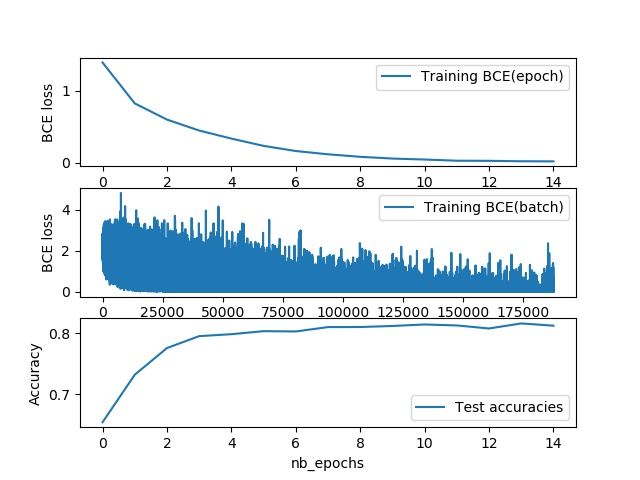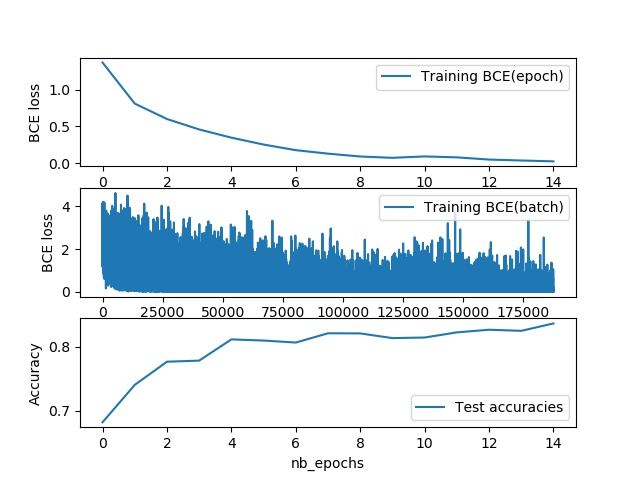This repository aims at reproducing the results from "CBAM: Convolutional Block Attention Module". We use the module coinjointly with the ResNet CNN architecture. The module is tested on the CIFAR10 dataset which is an image classification task with 10 different classes.
The CBAM module takes as input a tensor of feature maps of shape Channel x Height x Width and apply two self-attention mechanisms consecutively. It is implemented in the src/models/models/cbam.py file.
 Fig.1 - Full module taken from the original paper .
Fig.1 - Full module taken from the original paper .
The first attention mechanism is applied channel-wise, in that we want to select the channels (or features) that are the more relevant independently from any spatial considerations (ChannelAttention class).
 Fig.2 - Channel attention taken from the original paper .
Fig.2 - Channel attention taken from the original paper .
The second attention mechanism is applied along the two spatial dimensions. We want to select the more relevant locations in the feature maps independently from the channels (SpatialAttention class).
 Fig.3 - Spatial attention taken from the original paper .
Fig.3 - Spatial attention taken from the original paper .
This module is independant from the CNN architecture and can be used as is with other projects.
As the backbone, we use a Resnet implementation taken from there. The available networks are: ResNet18,Resnet34, Resnet50, ResNet101 and ResNet152.
The CBAM module can be used two different ways:
It can be put in every blocks in the ResNet architecture, after the convolution part and before the residual part.
It can also be put at the end of the ResNet network, just before the Linear predictor. In that case it is used only for the final feature maps.
Both are available here in the file src/models/models/cbam_cifar10.py.
- Install Anaconda
- Create new environment from environment.yml using makefile: make requirements
- Activate environment: conda activate myenv
The parameters, set in the file src/parameters/training.json are the followings:
- batch_size: the batch size for training
- lr: the learning rate for training
- momentum: network is trained with SGD which requires momentum
- batch_every: how often to log batch results in terminal
- n_epochs: number of epochs for training
- num_workers: num of workers for the dataloader
- model_name: name used for saving losses charts and trained models
- load_model: trained model checkpoint path, if not the empty string then resume training from last trained epoch up to n_epochs. Checkpoint are stored in src/reports/models/
- save_every: how often to save the model in training (in epochs)
- reduction_ratio: reduction ratio for the channel attention bottleneck default to 16
- kernel_cbam: kernel for convolution in spatial attention must be an odd number
- use_cbam_block: if 1 put CBAM block in every ResNet Block
- use_cbam_class: if 1 put CBAM block before the classifier
- resnet_depth: Resnet type in [18,34,50,101,152]
Every time there is a new best model, it is automatically stored as checkpoint in src/reports/models/ the file name includes "best" and " model_name. Training and test losses are plotted and stored every epoch in src/reports/losses/. The file name includes the last epoch number and " model_name.
Once the parameters are selected, use the Makefile to start the training. The command line is: python make train.
- Set the parameter load_model as explained in the Parameters part.
- Set the number of epochs (n_epochs) which must be higher than the number of epochs the model was already trained on.
- Run.
The parameters, set in the file src/parameters/evaluation.json are the followings:
- model_path: must be like "reports/models/model_name.pth" where model name is the name of the model to evaluate.
- batch_size: set the batch size for loading of the test set samples
- num_workers: num of workers for the dataloader
- Set the model path
- Use the Makefile to start the training. The command line is: python make evaluate.
The corresponding accuracy on test set will be reported in the terminal.
The reported results are taken from three models:
- ResNet18: this is the standard ResNet architecture for CIFAR10 with depth 18.
- ResNet18CbamBlock: this is the ResNet architecture with the CBAM module added in every block.
- ResNet18CbamClass: this is the ResNet architecture with the CBAM module added only before the classifier.
They were trained for 15 epochs with batch size 4 and kernel_cbam 3. Results can be found in the following table:
| Model | Test Accuracy(%) |
|---|---|
| ResNet18 | 84.36 |
| ResNet18CbamBlock | 82.06 |
| ResNet18CbamClass | 84.5 |


